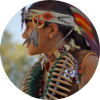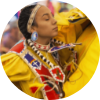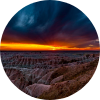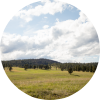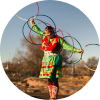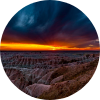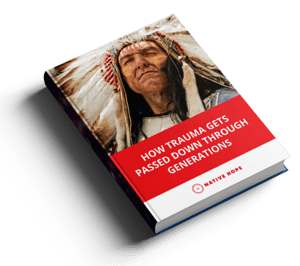Native American Life Today
UNDERSTANDING THE DESTRUCTION
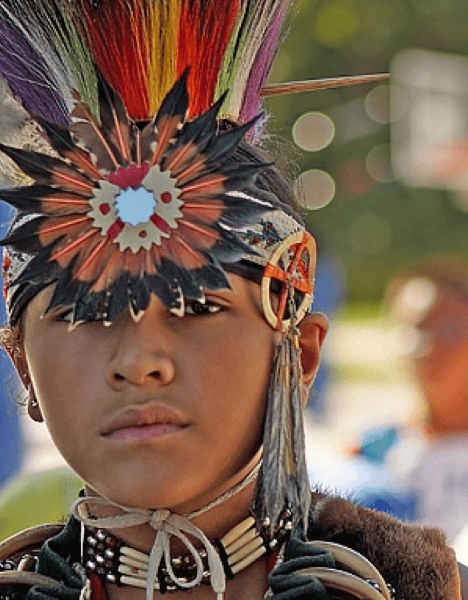

The mountain symbol comes from the Cherokee Tribe and is used here to represent the notion of “challenges.”
TODAY
Native American Challenges in the Modern World
Native Americans today face some extraordinary challenges. By nearly every social, cultural, economical, and physical measure, Native American communities and families are uniquely and negatively impacted by patterns of struggle.
While it is important to be positive and hopeful about the future of life for Native Americans in this country, it is first important to have a genuine understanding of what Indigenous people face, collectively and individually.
To understand what Native American life is like today, we first need to understand what it used to be like. For the past 500 years, Native Americans have faced genocide, dislocation, and various forms of physical, mental, and social abuse. These factors have led to high rates of violence, assault, suicide, poverty, and abuse among the Native American people today.
We have to understand the historical destruction that has occurred and how this destruction feeds the overwhelming hopelessness experienced by many Native Americans in the 21st century.
To read more about Native American history and their untold stories and struggles, visit our resource, Reflecting on Our Foundations: The History of Native American Life and Culture.
Issues Facing Native Americans Today
Understanding Native American life and culture today means understanding the historical context and how it continues to impact the lives of Natives and their families.
The voices of Native Americans are largely unheard. In this resource, we will highlight the serious challenges that Native Americans face in order to better understand how we can support Native voices that are rising strong to share their stories of hope.
We believe in the power of storytelling to dismantle barriers, bring healing, and inspire hope for native people.
Stay connected and read more stories.
CHAPTER 1
Educating a Non-Native Audience on Native Americans Today
For Native Americans, these challenges are ever-present and self-evident. But many non-Natives are unaware of the real lives and struggles that Native Americans face in the present era.
This is part of a larger forgetfulness because school history books are typically written by the dominant culture. It seems as if the rest of the country and the Western world has chosen to forget that this race of peoples is still here and still struggling to understand how to carry their tribes and their cultures forward in the modern world.
How much do public school students know about Native Americans in the United States? We went to a classroom to find out. Here’s what we found.
Terry Woster, retired and renowned South Dakota journalist and SD Hall of Fame recipient, attended a powwow and shares his thoughts. Check out our blog post to read his story and find out what he learned from the experience.
What’s the main takeaway from these stories?
Most non-Native people aren’t educated on the struggles and history of Native Americans. This is a trend that we must work together to correct.
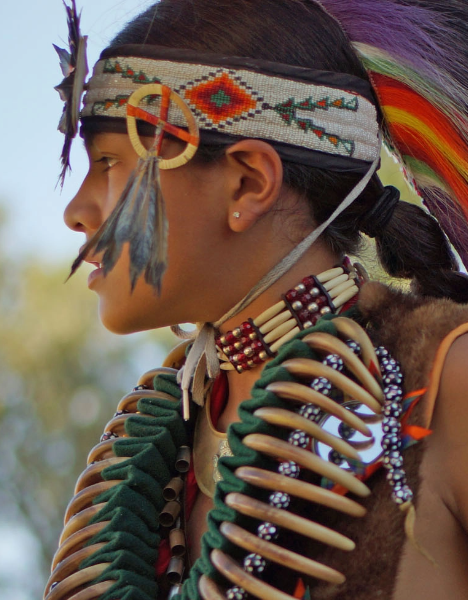

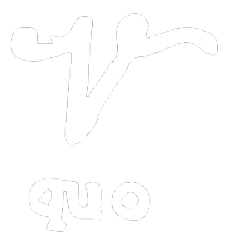
The mountain symbol comes from the Cherokee Tribe and is used here to represent the notion of “challenges.”
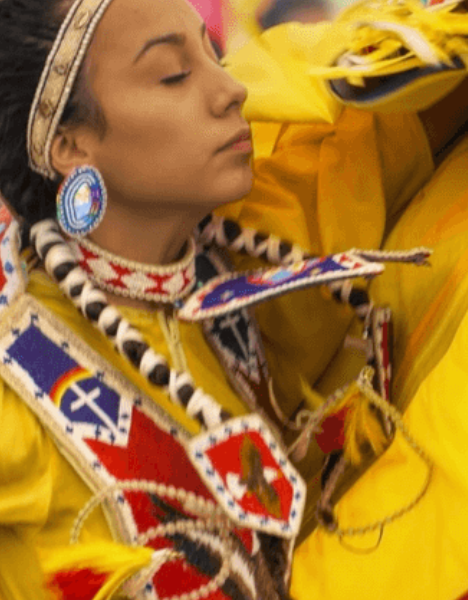

CHAPTER 2
Understanding Historical Trauma for Native American Families
In order to understand why Native Americans as a group have struggled to thrive in the modern world, it is crucial to understand the importance of historical trauma.
Dr. Maria Yellow Horse Brave Heart is a Hunkpapa, Oglala Lakota, and a professor at the University of New Mexico. She is the first person to develop the theory of historical unresolved grief, and she describes historical trauma as “the cumulative emotional and psychological wounding over one’s lifetime and from generation to generation following the loss of lives, land, and vital aspects of culture.
Historical Trauma
The cumulative emotional and psychological wounding over one's lifetime and from generation to generation following the loss of lives, land, and vital aspects of culture.
The indigenous peoples of this continent have faced 500 years of genocide, dislocation, and variations of physical, mental, emotional, and spiritual violence. From the biological warfare through the introduction of Western diseases, the dislocation and violence of European expansion across the continent, the cruel and discriminatory policies of the 19th century that banned cultural and spiritual expressions of Native life and that forcibly removed Native children from their tribal homes to send them to faraway boarding schools, to the discrimination and ignorance that persists to this day, Native Americans are dealing with generations of collective group trauma.
How Trauma Gets Passed Down
This massive trauma expresses itself today in the form of high rates of addiction, violence, and sexual abuse within Native families and communities. Many accounts suggest that the boarding school generations in particular were permanently scarred by their loss of identity and experiences of physical, mental, and sexual abuse in the school system.
When these Native children returned to their homes and families, having lost their culture and identity, and began to have families of their own, they were unable to form healthy bonds and passed on these patterns of abuse to their own children, creating cycles of broken families.
There is scientific evidence to support the idea that this kind of trauma gets passed down on the cellular level. Recent studies in the field of epigenetics suggest that unresolved trauma in the life of the mother gets passed along to offspring during gestation and affects the child’s likelihood of developing mental and physical diseases and the child’s ability to regulate and manage stress.
Native Americans today do not need to see themselves as permanent victims of history, but understanding the roots of historical trauma and seeing the way ancestral wounds have impacted today’s communities is an important first step to healing and growth.

The mountain symbol comes from the Cherokee Tribe and is used here to represent the notion of “challenges.”
CHAPTER 3
Native American Health Disparities Today
In order to understand why Native Americans as a group have struggled to thrive in the modern world, it is crucial to understand the importance of historical trauma.
Dr. Maria Yellow Horse Brave Heart is a Hunkpapa, Oglala Lakota, and a professor at the University of New Mexico. She is the first person to develop the theory of historical unresolved grief, and she describes historical trauma as “the cumulative emotional and psychological wounding over one’s lifetime and from generation to generation following the loss of lives, land, and vital aspects of culture.
The indigenous peoples of this continent have faced 500 years of genocide, dislocation, and variations of physical, mental, emotional, and spiritual violence. From the biological warfare through the introduction of Western diseases, the dislocation and violence of European expansion across the continent, the cruel and discriminatory policies of the 19th century that banned cultural and spiritual expressions of Native life and that forcibly removed Native children from their tribal homes to send them to faraway boarding schools, to the discrimination and ignorance that persists to this day, Native Americans are dealing with generations of collective group trauma.
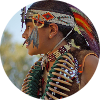
READ OUR RECENT BLOG
Mental Health issues from historical trauma plague Native Americans
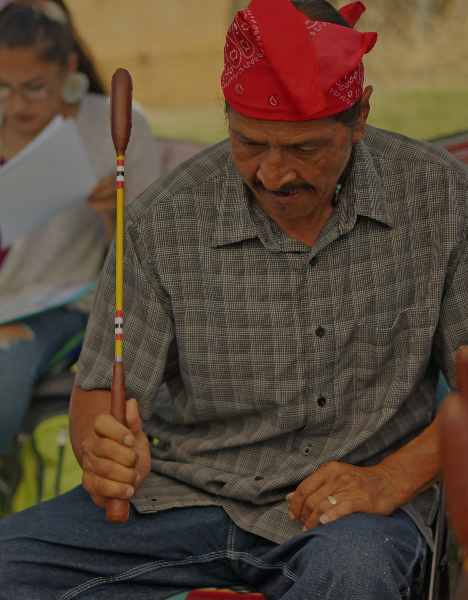


Here's how those numbers play out
MORALITY DISPARITY RATES
American Indians and Alaska Natives (AI/AN) in the IHS Service Area 2009-2011 and U.S. All Races 2010 (Age-adjusted mortality rates per 100,000 population)
| AI/AN Rate 2009-2011 |
U.S. All Races Rate - 2010 |
Ratio: AI/AN to US All Races |
|
| ALL CAUSES | 999.1 | 747.0 | 1.3 |
| Diseases of the heart (heart disease) | 194.7 | 179.1 |
1.1 |
| Malignant neoplasm (cancer) | 178.4 | 172.8 | 1.0 |
| Accidents (unintentional injuries) | 93.7 | 38.0 | 2.5 |
| Diabetes mellitus (diabetes) | 66.0 | 20.8 | 3.2 |
| Alcohol-induced | 50.0 | 7.6 | 6.6 |
| Chronic lower respiratory diseases | 46.6 | 42.2 | 1.1 |
| Cerebrovascular diseases (stroke) | 43.6 | 39.1 | 1.1 |
| Chronic liver diseases and cirrhosis | 42.9 | 9.4 | 4.6 |
| Influenza and pneumonia | 26.6 | 15.1 | 1.8 |
| Drug-induced | 23.4 | 15.3 | 1.5 |
| Nephritis, nephrotic syndrome (kidney disease) | 22.4 | 15.3 | 1.5 |
| Intentional self-harm (suicide) | 20.4 | 12.1 | 1.7 |
| Alzheimer's Disease | 18.3 | 25.1 | 0.7 |
| Septicemia | 17.3 | 10.6 | 1.6 |
| Assault (homicide) | 11.4 | 5.4 | 2.1 |
| Essential hypertension diseases | 9.0 | 8.0 | 1.1 |
Source: https://www.ihs.gov/newsroom/factsheets/disparities/
The good news is that many groups, such as the National Indian Health Outreach and Education Initiative (NIHOE), are working hard to draw attention to these issues and provide funding so that Native tribes can provide better healthcare.

The target symbol comes from the Cherokee Tribe and is used here to represent the notion of “sad.”
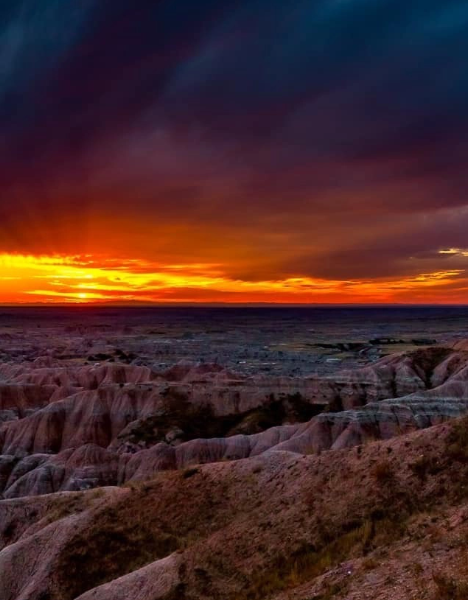

CHAPTER 4
The State of Native American Education Today
Receiving a solid education is something that all children deserve and something that many of us have taken for granted.
In fact, giving children access to an adequate education is the first step to breaking cycles of poverty. Education opens the door to new possibilities and opportunities and gives young people access to employment and independence.
The importance of a good education is universally accepted, yet few people understand the tragic state of education for Native Americans in the United States today.
In 1900, there were 20,000 children in boarding schools. Just 25 years later, that number climbed to 60,889
Only 17% of Native American Youth continue their education after high school… while more than 60% of the American Youth go on to receive some education at the college level.
The lack of educational opportunity for Native Americans is a serious challenge, one that impacts the success and health of Native communities for the long term.
Because of the reality of poverty on most reservations, many Native American children attend underfunded schools. Even the federal government’s Impact Aide program, in place to serve underprivileged children, is far from adequate.
There are many private institutions that are working hard to provide affordable, quality education to Native American children such as St Joseph’s Indian School and Red Cloud Indian School.
However, the problem persists: without proper funding, the education system is simply insufficient, and poor education, statistically speaking, leads to violence, poverty, and health-related issues
Native American Education History
So, how did we get here?
Unfortunately, the history of Native American education is just as troublesome as the rest of their interactions with European settlers.
The earliest schools were federal and then the missionary schools were founded by different religious groups whose goal was to assimilate Native children into the “white man’s” belief system. The government found that they could educate Native children at a cheaper price than to go to war. Over time, the U.S. government took over and started establishing boarding schools across the country which practiced the same systemized practice of assimilation.
“Kill the Indian, Save the Man.”
- Richard Pratt, founder of the Carlisle Indian School
The trauma surrounding those who attended the government boarding schools is well documented and has remained a controversial topic even today.
Learn More about Native American Boarding Schools
CHAPTER 5
Tribal Land and the Struggle for Native American Tribes Property Rights
At the root of many of the health, education, economic, and cultural challenges faced by Native Americans is tension over economic opportunity and property rights, specifically over tribal lands.
The tension over Native American property ownership has deep historical roots. Existing policy has established a relationship between tribal nations and the federal government that is characterized as a federal trust: the federal government assumes all responsibility for the management of Indian lands, acting as the legal owner or “trustee” on behalf of the tribal nations with which it has established treaties.
The federal trust relationship is driven by the idea that tribal nations are not capable of administering or managing their own lands. Without the right to own or manage their own lands, tribes are handicapped from economic activity and development and left out of important conversations like the recent controversy surrounding the Dakota Access Pipeline.
As one Atlantic article explaining this situation puts it, “Indians have long suffered from what the Nobel Prize-winning economist Hernando de Soto has called ‘dead capital.’ They may possess a certain amount of land on paper, but they can’t put it to use by selling it, buying more to take advantage of economies of scale, or borrowing against it.”
Many tribes have close ties to the land on which they live, even if the current footprint of land is much smaller than their original region. And many tribes might not choose to develop their tribal lands or leverage their rich natural resources because of a desire to preserve and maintain the integrity of sacred spaces. However, they are unable to make free choices about how to conduct their economic affairs and are not given a full voice in the decisions surrounding sacred lands due to their severely restricted property rights.
Native American tribes desperately need access to the wealth and resources that rightfully belong to them.
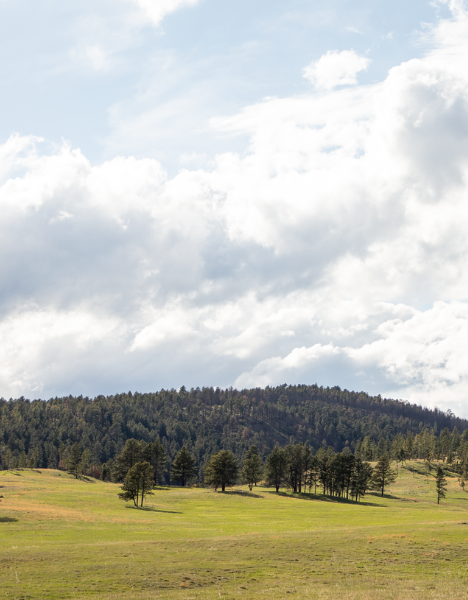



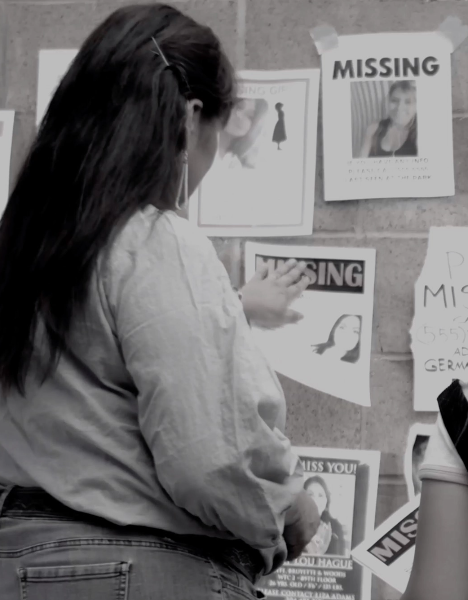



CHAPTER 6
MMIW: Missing and Murdered Indigenous Women
Unfortunately, the high levels of crime and violence have led to an epidemic of missing and murdered Native women in the United States.
According to the Coalition to Stop Violence Against Native Women, 4 out of 5 Native women are affected by violence today and American Indian women face murder rates that are more than 10 times the national average.
The history of violence against Native women dates back centuries to the first explorers of North America and has continued through the settlement and expansion by Europeans over the centuries.
Human trafficking in Native American communities is another epidemic that continues even today. Because of the rural areas where Natives live and the lack of law enforcement available, Native women have been an easy target for violence and trafficking.
Additionally, there are complicated jurisdictional barriers that arise when a crime occurs between Native and non-Native peoples that often lead to injustice.
Massive events like the Sturgis Motorcycle Rally become hotspots for Native American trafficking with multiple arrests being made every year. Law enforcement and government officials are becoming increasingly aware of this issue and taking steps to address it, but we still have a long way to go to protect indigenous women from sexual violence and trafficking.
Sex Trafficking of Native American Women
The Sturgis Motorcycle Rally brings thousands of people together from across the country every year. It's also the site of sex trafficking and missing and murdered indigenous women.Sex trafficking during the Sturgis Motorcycle Rally
CHAPTER 7
How Native American Youth Overcome Challenges with Hope
All of these current challenges—lack of educational opportunity, physical and mental health disparities, the intense impact of historical trauma, lack of economic independence—are part of the great tragedy facing Native Americans: the loss of Native American culture and identity.
The traditional ways of life, the tribal languages, the songs and dances, the wisdom of elders, and the strong values that once animated Native cultures have in many cases been threatened or extinguished. Even for tribes who have managed to recover or maintain a strong sense of their cultural heritage, there is still the present difficulty of understanding how tribal identity can coexist with the modern, Western culture which opposes it in so many ways.
Part of the challenge is that Native Americans are a diverse and scattered race of people. There are currently 6.7 million Native Americans living in the United States. However, only 22% of Native Americans live on reservations. The rest are scattered across the country. For people of Native American descent who live off reservations, the challenge is to see what their Native American identity and ancestry means for their lives. In many cases, people of Native American descent are full of a longing to know more about their ancestors and to reconnect with a tribe or culture they have lost.
Many young Native Americans, like Starr Chief Eagle, are keeping their culture alive and sharing it with the world. Starr practices hoop dancing, art, language, history, and song to keep her native Lakota tradition alive by performing for visitors at schools, reservations, and national parks.
Starr and others like her are fighting these challenges and bringing energy and hope to their people. Dennis Metcalf of the Hunkpati Oyate tribe is turning trauma and difficulties into healing through art.
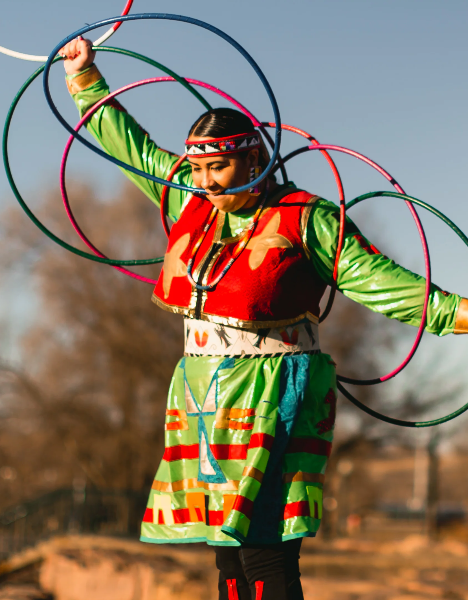







CHAPTER 8
Native American Culture Today
With all of the challenges facing modern Native American communities, it’s no small task trying to keep the Native identity alive. Many young tribal members are struggling with identity crises and feel removed from their Native heritage.
However, the message that people like Starr Chief Eagle and Dennis Metcalf are sending is very clear: the Native American identity is something to be proud of and worth preserving.
Today, Native art is among the most beautiful in the world with incredible paintings, books that tell amazing stories, and dancing that invokes thousands of years of ancestral history.
Visiting reservations and museums, you can see the spirit of Native American culture being kept alive. Even now, tribes across the country are still practicing the customs and traditions that have existed for centuries including their spiritual beliefs, clothing and appearance, food, song and dance, and more.
Our healing begins with storytelling.
And that’s why we tell stories.
Subscribe to our weekly blog, Voices of Indian Country, to receive our stories.

